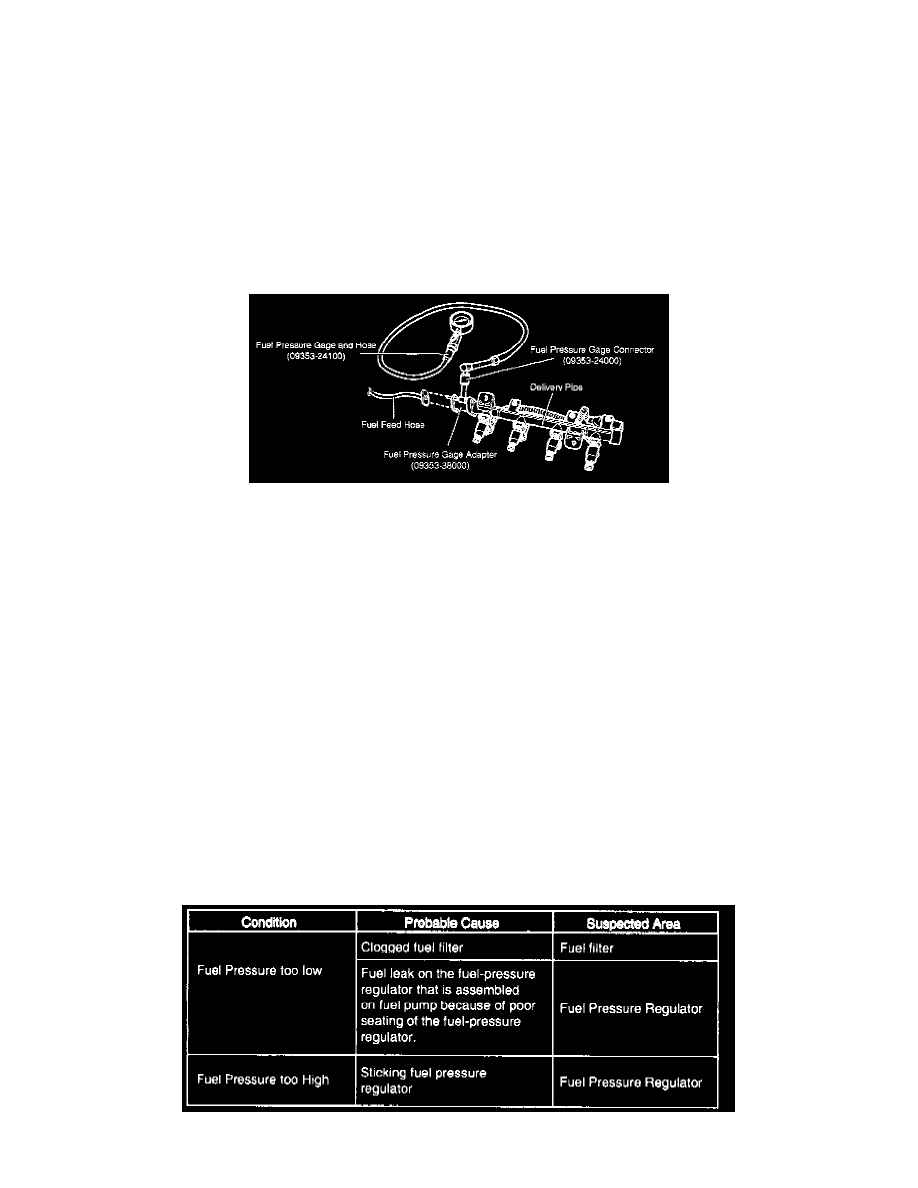Santa Fe L4-2.4L (2001)

Fuel Pressure: Testing and Inspection
FUEL DELIVERY SYSTEM
Fuel Pressure Test
1. PREPARING
1. Open the service cover under the floor carpet.
2. RELEASE THE INTERNAL PRESSURE
1. Disconnect the fuel pump connector.
2. Start the engine and wait until fuel in fuel line is exhausted.
3. After the engine stalls, turn the ignition switch to OFF position and disconnect the negative (-) terminal from the battery.
Note: Be sure to reduce the fuel pressure before disconnecting the fuel feed hose, otherwise fuel will spill out
Fuel Pressure Special Service Tool
3. INSTALL THE SPECIAL SERVICE TOOL (SST) FOR MEASURING THE FUEL PRESSURE
1. Disconnect the fuel feed hose from the delivery pipe.
Caution: Cover the hose connection with a shop towel to prevent splashing of fuel caused by residual pressure in the fuel line.
2. Install the Fuel Pressure Gage Adapter (09353-38000) between the delivery pipe and the fuel feed hose.
3. Connect the Fuel Pressure Gage Connector (09353-24000) to the Fuel Pressure Gage Adapter (09353-38000).
4. Connect the Fuel Pressure Gage and Hose (09353~41 00) to Fuel Pressure Gage Connector (09353-24000).
5. Connect the fuel feed hose to the Fuel Pressure Gage Adapter (09353-38000).
4. INSPECT FUEL LEAKAGE ON CONNECTION
1. Connect the battery negative (-) terminal.
2. Apply battery voltage to the fuel pump terminal and activate the fuel pump. With fuel pressure applied, check that there is no fuel leakage from
the fuel pressure gauge or connection part.
5. FUEL PRESURE TEST
1. Disconnect the negative (-) terminal from the battery.
2. Connect the fuel pump connector.
3. Connect the battery negative (-) terminal.
4. Start the engine and measure the fuel pressure at idle.
Standard Value: 343 Kpa (3.5 kgf/cm cm, 49.8 psi)
Incorrect Pressure
